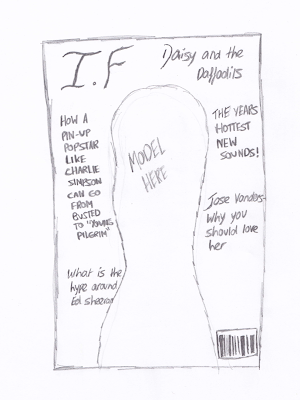I created a survey monkey that involved questions that would help me to narrow down my target audience so I can pinpoint the lifestyle that they lead and tailor my music magazine to fit this. I needed the questions to help me find out their age, gender, what they do, and the types of stories they are interested in finding within my magazine. This information can go towards making sure that my magazine appeals directly to them so that it is something they must read. I want to present my magazine in a way that fits straight in with their lifestyle and is personal to the members of my target audience. For this my survey monkey was very helpful as it created an outline of my target audience to make it clearer to me of what they would like to find.

From the screenshot above it is clear that my primary age group is going to be from the ages of 17-18 as this has proven to be the most popular. Although as this is a quite narrowed down age group my broader range would be to the ages of 16-22 as these have proven to also be popular. This more broad age group gives me a better target audience to aim too as there are more people involved within this age group.
This screenshot here shows the question of what do you do for a living and from this I found that the majority of people are students. This gives me more of an idea of the kind of things to put in my magazine knowing that my target audience is mainly made up of students because it means they like going out a lot and I can keep them informed of gigs close to them. Also because of the fact that my target audience is made up of students I need to ensure that I keep my magazine at a reasonable price so that my target audience can afford it.
This screenshot shows me what music magazines my target audience already reads so that I can include aspects of these but make them slightly different with new ideas within mine. These results show me that my target audience's current most popular magazines are Q and Kerrang so this means I can involve features of these magazines within mine to make it familiar to my target audience while still having a fresh stance against magazines already out there.
This question is asking my target audience whether they would prefer the cover model to be male, female or both as this information will help me to decide who I put on my cover. From these results I can see that my target audience would prefer a female cover model which means I can use a female cover model to suit what my target audience would rather see.
From this screenshot you can see I was finding out from my target audience which masthead they would prefer, I found four possible mastheads for my magazine then used them to show my target audience to find out which one would best suit their needs. From the results it is clear that masthead 1 was the most popular so therefore this is the one that I will use on my final magazine cover.
In this question I was finding out from my target audience which colour scheme they would prefer so that I know which one to use for my magazine front cover and throughout my magazine so that is reflects the target audience's needs and looks appealing to them. The results showed me that the colour scheme that is most popular with my target audience is white, black, blue and yellow.
In this screenshot I was finding out from my target audience what type of feature articles would most interest them when reading a music magazine. As this was an open question I had a variety of responses but the most popular ones included popular artists/bands, break up stories and live show reviews. From this information I can include these types of feature articles within my magazine so that my target audience can find stories that interest them which means they will want to read it.
This question was to find out what stories my target audience would like to see on the front cover of my magazine to get them interested in reading it. The most popular responses from this were stories about new album releases, new artists and band gossip/splits. From these results I can include these on my cover to get the target audience wanting to read my magazine because it has the stories they are interested in reading.


















































